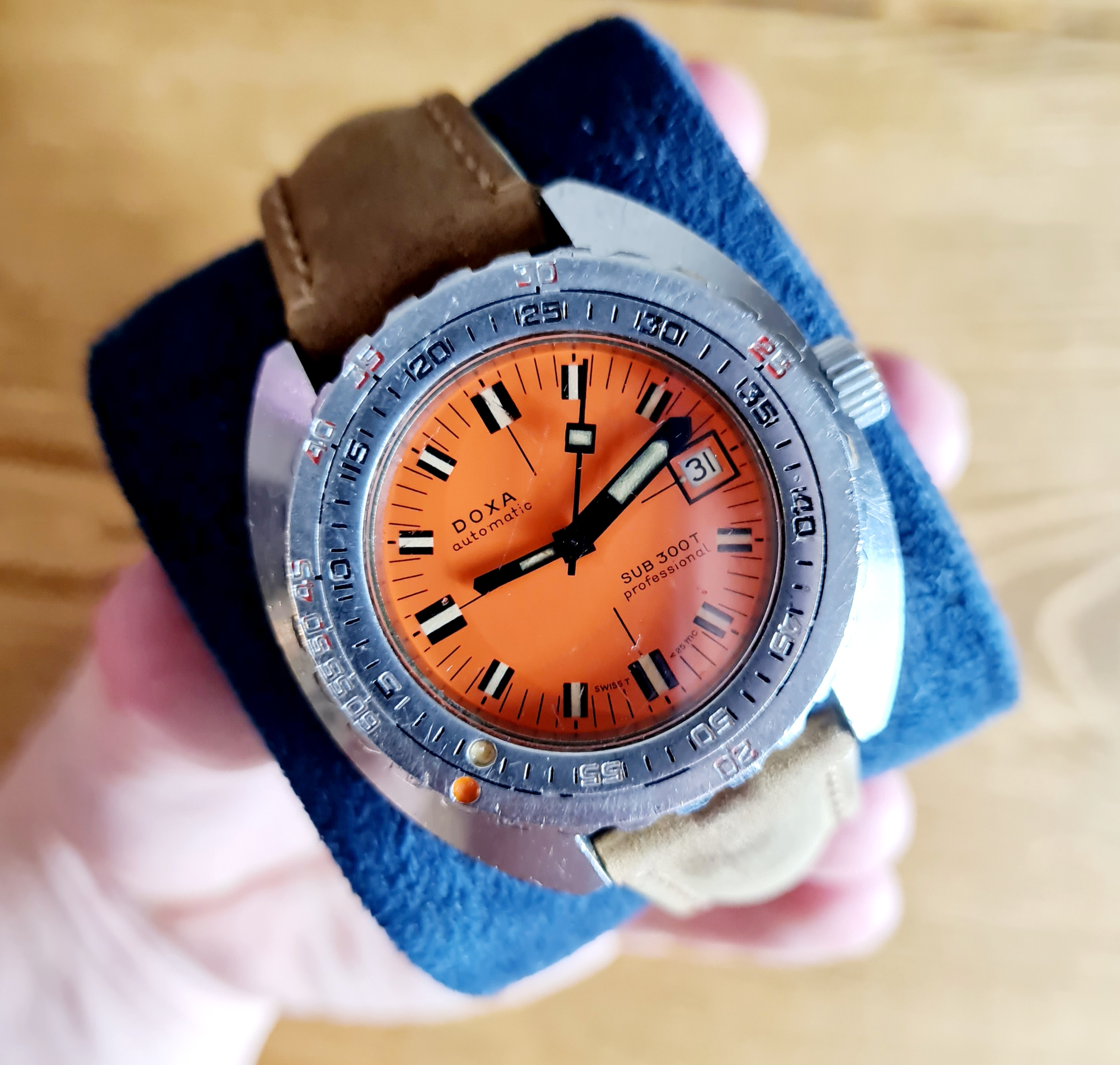Doxa was founded in 1889 by Georges Ducommun in Le Locle, Switzerland. After building a reputation for robust, affordable timepieces and dashboard timers, the brand shifted focus in the 1960s to purpose‑built dive watches designed for professional and recreational use.
In 1967, Doxa introduced the SUB 300—developed with input from U.S. Divers and Jacques‑Yves Cousteau. Its now‑iconic orange “Professional” dial maximised legibility underwater, while the patented no‑decompression bezel integrated U.S. Navy dive tables for at‑a‑glance safety. The ergonomic cushion case and beads‑of‑rice bracelet with a diving extension made it a true tool watch.
Doxa followed with the SUB 300T and, notably, the 300T Conquistador (1969), among the earliest commercially available dive watches with a helium escape valve. The line expanded into variants distinguished by dial colour: Professional (orange), Sharkhunter (black), Searambler (silver), and Caribbean (blue). Through the 1970s the brand adopted larger cushion/tonneau cases and higher depth ratings as saturation diving matured.
Today, vintage Doxa SUB models are prized for their originality and unmistakable aesthetic. Collectors look for correct dials and hands, matching no‑decompression bezels, signed casebacks, and proper bracelet end‑links. Many orange dials fade gracefully; uniform ageing is preferred. As with any vintage diver, water resistance should not be assumed—pressure testing after service is essential.
Whether you’re drawn to early thin‑case SUB 300s, workhorse 300Ts, or later Synchron‑era pieces, Doxa’s contribution to the golden age of dive watches is undeniable and continues to influence modern reissues and contemporary tool‑watch design.
